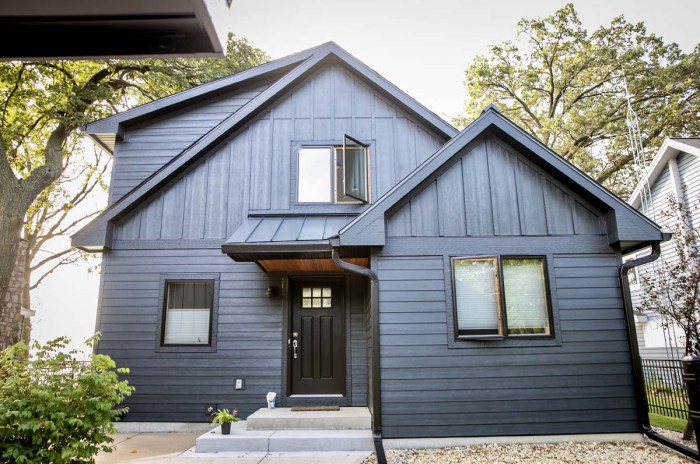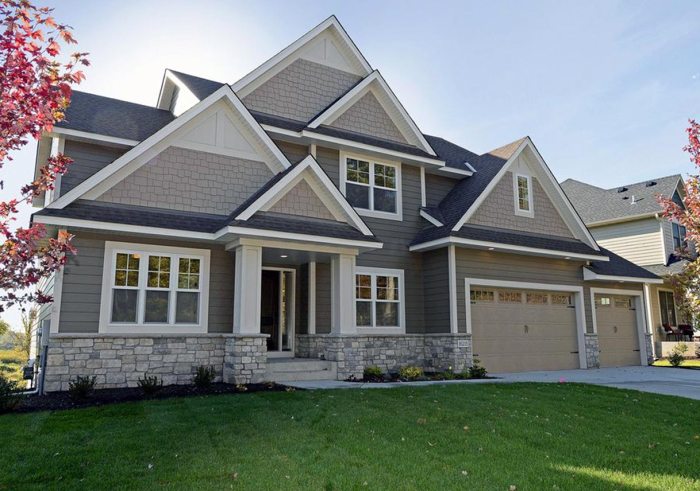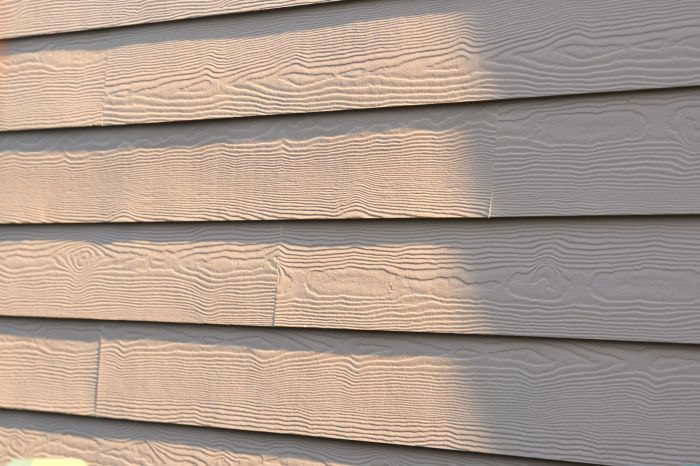Exploring the Beauty of a Hardie Plank House
Embark on a journey through the world of Hardie plank houses, where durability meets elegance. This introduction sets the stage for a captivating exploration of the unique features and benefits of Hardie plank siding, sure to intrigue readers seeking to enhance their homes.
In the following paragraphs, we will delve deeper into the composition, installation, maintenance, and cost considerations of opting for Hardie plank siding for your house.
What is Hardie plank siding?

Hardie plank siding, also known as fiber cement siding, is a durable and low-maintenance material used for exterior cladding on homes. It is made from a combination of cement, sand, and cellulose fibers, creating a strong and weather-resistant product.
Composition and Characteristics
Hardie plank siding is known for its resistance to rot, fire, termites, and moisture, making it a popular choice for homeowners looking for long-lasting siding options. It is also available in a variety of textures that mimic the look of wood, stucco, or stone, providing versatility in design options.
Benefits of Hardie Plank Siding
- Low maintenance: Hardie plank siding requires minimal upkeep compared to traditional wood siding.
- Durability: Resistant to damage from insects, rot, and harsh weather conditions.
- Fire resistance: Hardie plank siding is non-combustible, adding an extra layer of protection to your home.
- Curb appeal: Available in a wide range of styles and colors to suit any architectural design.
Styles and Colors Available
- Smooth: A sleek and modern finish that works well with contemporary homes.
- Wood grain: Mimics the look of natural wood for a classic appearance.
- Cedar mill: Textured to resemble cedar wood with a rustic charm.
Installation of Hardie plank siding
Installing Hardie plank siding on a house involves several steps to ensure a proper and durable installation. Compared to other types of siding materials, the installation process for Hardie plank siding requires attention to detail and specific techniques for optimal results.
Preparation of the Surface
Before installing Hardie plank siding, it is essential to prepare the surface properly. This includes removing any existing siding, repairing damaged areas, and ensuring the surface is clean and smooth for the new siding.
Measuring and Cutting
Accurate measurements are crucial when installing Hardie plank siding. Each plank must be measured and cut precisely to fit the specific area of the house. A saw with a fiber cement blade is typically used to cut the planks to size.
Installation of the Planks
The Hardie plank siding is then installed starting from the bottom and working upwards. Each plank should be nailed into place using corrosion-resistant nails, leaving a small gap between each plank to allow for expansion and contraction.
Finishing Touches
Once all the planks are installed, the finishing touches can be added, such as caulking the joints and painting the siding to protect it from the elements. Proper sealing and painting are essential for the longevity of the Hardie plank siding.
Comparison with Other Siding Materials
Compared to vinyl or wood siding, Hardie plank siding offers superior durability and resistance to elements like moisture, pests, and fire. While the installation process may be more labor-intensive, the long-term benefits of Hardie plank siding make it a popular choice for homeowners.
Tips for a Proper Installation
- Follow the manufacturer's guidelines for installation to ensure the warranty remains valid.
- Use the correct tools and equipment for cutting and nailing the planks.
- Pay attention to proper sealing and painting to protect the siding from damage.
- Consider hiring a professional installer for a flawless and efficient installation process.
Maintenance and care of Hardie plank siding

Proper maintenance is crucial to ensure the longevity and appearance of your Hardie plank siding. By following some simple guidelines, you can keep your siding looking great for years to come.
Maintenance requirements for Hardie plank siding
- Inspect your siding regularly for any signs of damage, such as cracks, chips, or moisture penetration.
- Trim any overhanging tree branches or shrubs that may come in contact with the siding to prevent scratches or damage.
- Keep the area around your siding clean and free from debris to avoid mold or mildew growth.
Cleaning and repairing Hardie plank siding
Regular cleaning is essential to maintain the appearance of your Hardie plank siding. Here are some guidelines:
- Use a soft brush or a low-pressure hose to remove dirt and grime from the surface of the siding.
- For tougher stains, mix water with mild soap and gently scrub the affected area with a soft brush.
- Avoid using high-pressure washers as they can damage the siding.
- Repair any damaged or cracked sections of the siding promptly to prevent further issues.
Preventing common issues in Hardie plank siding
To prevent common problems like moisture damage or discoloration in your Hardie plank siding, follow these tips:
- Ensure proper installation with adequate clearance from the ground to prevent water damage.
- Seal any gaps or joints in the siding to prevent moisture infiltration.
- Avoid painting the siding a darker color than recommended, as it can lead to heat absorption and potential warping.
Cost considerations of using Hardie plank siding
When choosing Hardie plank siding for your house, it is essential to consider the cost implications. While the initial investment may seem higher compared to other siding options, the long-term benefits and durability of Hardie plank siding can outweigh the upfront costs.
Comparing initial cost with long-term benefits
Although Hardie plank siding may have a higher initial cost than traditional vinyl or wood siding, its long-term benefits can make it a cost-effective choice. Hardie plank siding is known for its durability, resistance to rot and insects, and minimal maintenance requirements.
This means that you may save money on repairs and replacements in the long run, making it a worthwhile investment.
Cost-saving measures and alternatives
While Hardie plank siding is a premium option, there are ways to manage costs without compromising on quality. One cost-saving measure is to consider the thickness of the siding - opting for a thinner plank may reduce the overall cost.
Additionally, you can explore different finishes and styles to find a more affordable option that suits your budget. Another alternative is to mix Hardie plank siding with other materials, such as stone or brick, to create a unique look while controlling costs.
Final Conclusion

As we conclude our discussion on Hardie plank houses, it's clear that these siding options offer a perfect blend of style and functionality. Whether you prioritize longevity, aesthetics, or cost-efficiency, Hardie plank siding proves to be a versatile choice for any homeowner looking to elevate their property.
Key Questions Answered
How long does Hardie plank siding last?
Hardie plank siding is known for its durability and can last up to 50 years with proper maintenance.
Can I paint Hardie plank siding?
Yes, Hardie plank siding can be painted to change or refresh the color, but it's important to follow the manufacturer's guidelines for paint selection and application.
Is Hardie plank siding resistant to pests?
Hardie plank siding is resistant to pests like termites and woodpeckers, making it a reliable choice for homeowners concerned about potential damage.